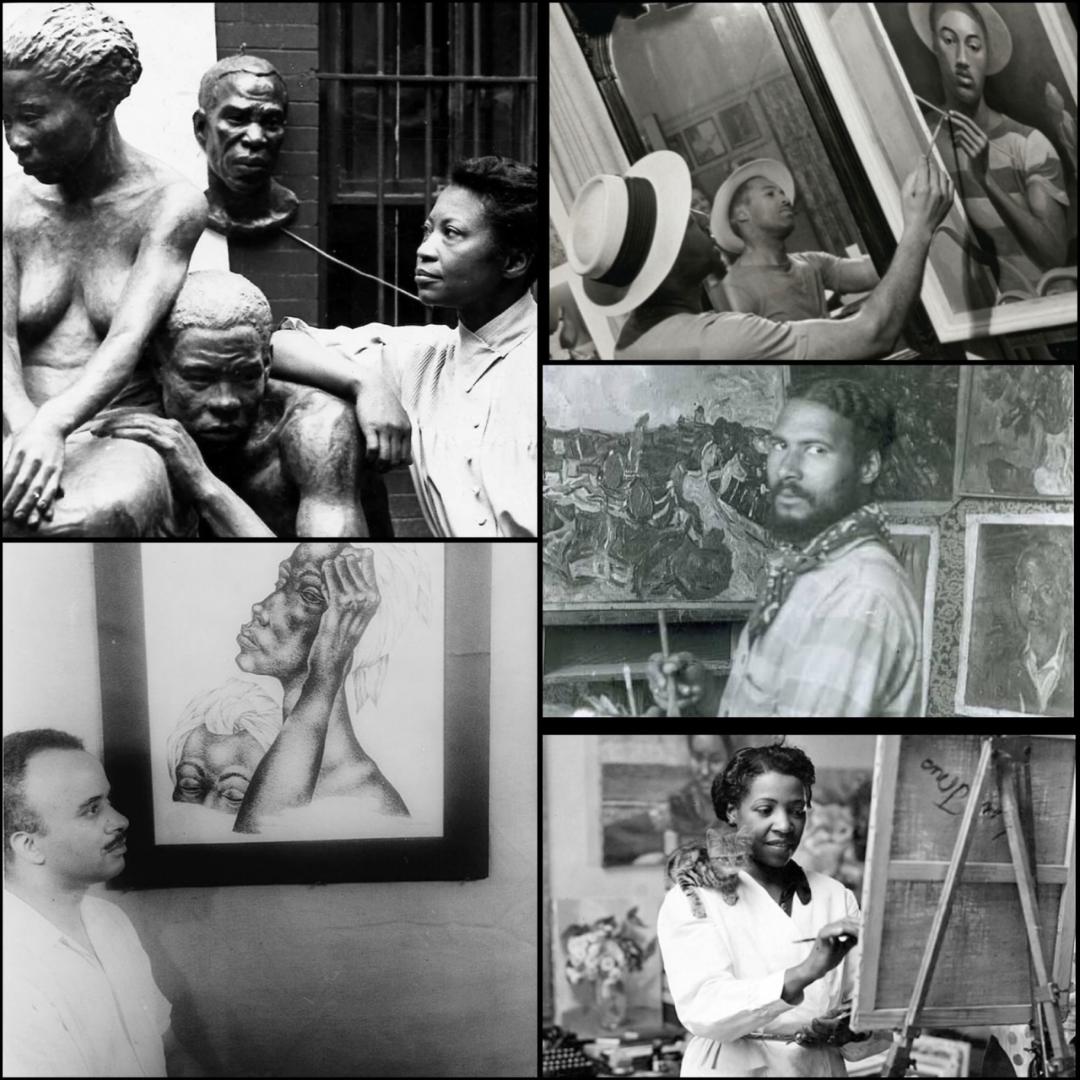Unsung Voices: Overlooked Black Artists Who Deserve Recognition
This Black History Month, let’s take the time to celebrate the voices that history has too often ignored. Their work is not just part of Black history—it’s part of art history, and it deserves to be seen, studied, and appreciated.

1. William H. Johnson (1901–1970) – Pioneering Folk Artist
William H. Johnson, a painter, evolved from creating impressionistic landscapes to vibrant, colorful portrayals of Black life in the United States. His folk art-inspired approach captured everyday scenes, notable figures, and cultural customs. Despite his talent, Johnson faced financial struggles and passed away in obscurity, only to have his work rediscovered decades later.
Significance:
- His lively, folk-inspired art celebrated African American life and culture.
- He depicted historical Black figures such as Harriet Tubman and George Washington Carver.
- Today, his work is displayed in prestigious institutions like the Smithsonian.
2. Augusta Savage (1892–1962) – Barrier-Breaking Sculptor
Augusta Savage, a sculptor and educator, was renowned for her powerful representations of Black identity and resilience. A prominent figure in the Harlem Renaissance, she crafted The Harp for the 1939 New York World’s Fair, inspired by the song "Lift Every Voice and Sing." Despite her talent, many of her sculptures were not preserved, and her contributions to art remained largely unacknowledged for years.
Significance:
- One of the Harlem Renaissance's most influential sculptors.
- A dedicated mentor to various Black artists, including Jacob Lawrence.
- Her legacy has only recently started to gain broader recognition.
3. Eldzier Cortor (1916–2015) – Celebrator of Black Femininity Through Painting
Eldzier Cortor, a painter and printmaker, is best known for his captivating portrayals of Black women. Influenced by African art and the struggles faced by Black Americans, his work often featured elongated figures in surreal, dreamlike settings. Despite his remarkable talent, Cortor remained relatively obscure in the art world.
Significance:
- A pioneer in highlighting the beauty and strength of Black women in fine art.
- His art blended surrealism, African influences, and social realism.
- Museums are increasingly showcasing his work prominently.
4. Lois Mailou Jones (1905–1998) – Cultural Bridge Builder Through Painting
Lois Mailou Jones, a painter with a career spanning over seven decades, drew inspiration from African art, Caribbean culture, and the Harlem Renaissance. Despite encountering racial discrimination early on, she became a globally recognized artist and a staunch advocate for Black representation in art.
Significance:
- One of the first Black women to achieve international acclaim as a fine artist.
- Explored themes of African heritage, racial identity, and feminism in her work.
- She inspired generations of Black artists through her teaching and activism.
5. Henry Clay Anderson (1911–1998) – Chronicler of Everyday Black Life Through Photography
Henry Clay Anderson focused on capturing joy, success, and community in the lives of Black Americans, offering a different narrative from the images of oppression often seen in the media. Operating a photography studio in the Jim Crow South, Anderson documented middle-class Black families, showcasing Black resilience and prosperity.
Significance:
- Provides a unique perspective on Black prosperity and daily life in the segregated South.
- Challenges stereotypes and showcases the beauty of Black resilience through photography.
- His archive was rediscovered in the early 2000s, leading to a renewed appreciation of his work.
To further support and learn about Black artists:
- Visit museums or galleries exhibiting Black artists.
- Research and share information about overlooked Black artists.
- Support living Black artists by purchasing their work or attending their exhibitions.
- Advocate for schools and institutions to include Black artists in their educational programs.

